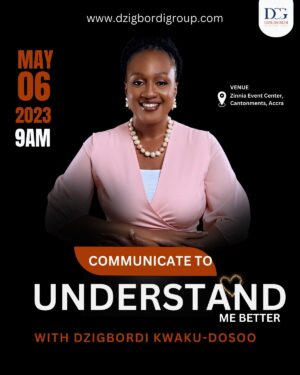Effective communication lies at the heart of every successful business. The ability to convey information clearly and concisely to a diverse audience is essential for fostering understanding and collaboration. This article examines the importance of communication in the business world, provides practical techniques for professionals, and explores how understanding can cultivate trust, collaboration, and growth.
Navigating the business world often involves grappling with an array of terminologies, complex concepts, and diverse stakeholders, including employees, customers, investors, and suppliers. This diversity makes it challenging to communicate effectively, as messages need to resonate with different audiences, who may possess varying degrees of familiarity with the subject matter. Additionally, cultural differences and language barriers can further complicate the communication process. Consequently, business professionals must develop the skills and strategies needed to overcome these hurdles and ensure their message is received loud and clear.
Understanding goes hand-in-hand with communication. It is the ability to interpret and make sense of the information being communicated, to grasp the intended meaning and emotions behind the words, and to empathize with the speaker’s perspective. Understanding is what allows individuals to connect with one another on a deeper level, bridging gaps in knowledge, experience, and culture. This connection fosters trust, respect, and collaboration, all of which are essential for personal and professional success.
Nonverbal communication is a critical aspect of human interaction that often goes unnoticed or underappreciated. As highlighted by Mehrabian’s (1971) research, nonverbal cues like facial expressions, body language, and tone of voice significantly contribute to conveying emotions and meaning during communication. Developing an awareness of nonverbal communication and accurately interpreting these cues can greatly enhance our understanding of others’ messages and emotions, leading to more effective communication and stronger relationships.
Facial expressions are a powerful means of conveying emotions without the need for words. They can indicate happiness, sadness, anger, surprise, and a myriad of other emotions. By paying attention to others’ facial expressions during communication, we can gain insight into their emotional state and react accordingly, fostering empathy and understanding.
Body language, including posture, gestures, and movements, is another essential aspect of nonverbal communication. These cues can reveal a person’s level of confidence, openness, and comfort in a given situation. For example, someone who maintains an open posture with relaxed arms and shoulders may be more receptive to communication and open to understanding, while someone who crosses their arms and leans away might be feeling defensive or closed off.
Tone of voice is yet another important nonverbal cue, as it can convey emotions, attitudes, and intentions beyond the words being spoken. The same sentence can take on completely different meanings based on the speaker’s tone. By listening carefully to a person’s tone of voice and considering the emotional context, we can better understand the intended meaning and emotions behind the words.
In addition to accurately interpreting nonverbal cues, it’s essential to be aware of our own nonverbal communication. By being conscious of the facial expressions, body language, and tone of voice we exhibit, we can ensure that our nonverbal cues align with our intended message, making communication more effective and reducing the potential for misunderstandings. By being aware of and accurately interpreting nonverbal cues such as facial expressions, body language, and tone of voice, individuals can develop a deeper understanding of the message being conveyed and the emotional context in which it is presented. This heightened understanding can lead to more effective communication, stronger connections, and improved personal and professional relationships.
Research by Salovey and Mayer (1990) introduced the concept of emotional intelligence, which has since been widely recognized for its role in effective communication and understanding. Emotional intelligence is the ability to recognize, understand, and manage one’s emotions, as well as the emotions of others. Studies have shown that individuals with high emotional intelligence are better equipped to navigate the complexities of interpersonal communication and foster understanding (Goleman, 1995).
A study by Brackett, Rivers, and Salovey (2011) found that emotional intelligence training could improve communication skills, leading to more positive outcomes in professional and personal relationships. By developing emotional intelligence, individuals can adapt their communication styles to different situations, recognize and respond to emotional cues, and build rapport with others.
Emotional intelligence plays a significant role in fostering understanding during communication. Being aware of one’s emotions, as well as the emotions of others, can help individuals navigate the subtleties of communication more effectively. By recognizing and responding to the emotional cues and nonverbal signals that accompany verbal communication, individuals can develop a deeper understanding of the message being conveyed, as well as the emotional context in which it is presented. Emotional intelligence also helps in adapting communication styles to different situations and audiences, further enhancing understanding and rapport.
Research by Gudykunst and Kim (2003) emphasized the importance of cultural competence in communication, which involves recognizing, appreciating, and adapting to diverse cultural norms and practices. A study by Bhawuk and Brislin (2000) found that cultural competence training could improve individuals’ ability to communicate effectively across cultural boundaries. As our world becomes increasingly interconnected, understanding and navigating cultural differences in communication is essential. Cultural competence is the ability to recognize, appreciate, and adapt to diverse cultural norms and practices, enabling individuals to communicate effectively across cultural boundaries. By developing cultural competence, individuals can minimize misunderstandings, foster mutual respect, and facilitate understanding in multicultural environments. This skill is particularly valuable in professional settings, where diverse teams often collaborate on projects and engage with clients from various cultural backgrounds.
Lastly, we must appreciate that active listening is a crucial component in the connection between communication and understanding. Various research studies have been conducted to examine the most effective communication strategies for fostering understanding. Let’s explores some of these findings, shedding light on the methods and techniques that can enhance our ability to communicate and understand one another.
Research conducted by Janusik and Wolvin (2009) indicates that active listening is a crucial element in fostering understanding during communication. Active listening involves focusing on the speaker, avoiding distractions, and providing feedback through verbal and non-verbal cues. The study found that individuals who practiced active listening were better able to comprehend the speaker’s message, avoid misunderstandings, and establish stronger connections with others. By focusing on the speaker and giving them undivided attention, listeners can absorb and interpret the information being shared more effectively. Active listening also involves asking questions, seeking clarification, and providing feedback, all of which contribute to a more comprehensive understanding of the message being conveyed. By engaging in active listening, individuals can avoid misinterpretations, reduce the likelihood of conflicts, and foster stronger connections with others. Some pointers to practice active listening are as follows:
- Give the speaker your full attention: Focus on the speaker, avoid distractions, and resist the urge to interrupt or formulate responses before they’re finished speaking. This demonstrates respect and helps you grasp the full extent of their message.
- Reflect and clarify: Paraphrase or summarize what the speaker said to ensure you’ve understood correctly. This also gives the speaker a chance to correct misunderstandings or provide additional details.
- Ask open-ended questions: Open-ended questions encourage elaboration and deepen understanding. By asking questions that prompt further explanation, you can uncover valuable insights.
- Show empathy and patience: Displaying empathy and patience during conversations creates an environment where everyone feels comfortable sharing their thoughts and concerns. Acknowledging the speaker’s feelings and experiences fosters trust and strengthens relationships.
Furthermore, a study by Davis (1983) examined the relationship between empathy and understanding in communication. The research revealed that individuals with higher levels of empathy were more likely to understand the emotions and perspectives of others. This ability to “put oneself in another’s shoes” allows for more effective communication and fosters stronger interpersonal relationships.
Here are 4 keys that business leaders and anyone in entrepreneurship and business can learn to communicate to be understood better.
- Adaptability in Communication Styles
Business leaders should learn to adapt their communication styles to suit different audiences and situations. This may involve adjusting their language, tone, or presentation methods based on factors such as the audience’s background, knowledge level, or cultural context. By being flexible and adaptable, leaders can ensure that their messages are effectively conveyed and understood by a diverse range of people.
- Encouraging Open Dialogue and Feedback
To promote understanding, business leaders should create an environment where open dialogue and feedback are encouraged. This can involve providing opportunities for employees to voice their opinions, ask questions, and offer suggestions without fear of negative consequences. By fostering a culture of open communication, leaders can ensure that misunderstandings are minimized, and employees feel heard and valued.
- Utilizing Visual Aids and Storytelling
Business leaders can enhance understanding by incorporating visual aids and storytelling techniques into their communication strategies. Visual aids, such as charts, graphs, or images, can help clarify complex concepts and make information more accessible. Storytelling can also be an effective tool, as it allows leaders to convey information in a relatable, engaging, and memorable way. By utilizing these techniques, leaders can improve comprehension and retention of their messages.
- Developing Conflict Resolution Skills
Conflict is inevitable in any organization, and effective communication is crucial for resolving disputes and maintaining a harmonious work environment. Business leaders should develop their conflict resolution skills, which may involve active listening, empathizing with different perspectives, and finding mutually beneficial solutions. By addressing conflicts constructively and fostering understanding between parties, leaders can maintain a positive, collaborative atmosphere within their organization.
In conclusion, effective communication is the cornerstone of successful leadership, and understanding plays a crucial role in fostering strong professional relationships. By mastering versatile communication styles, promoting a culture of openness, incorporating visual aids and storytelling techniques, and refining conflict resolution skills, business leaders can significantly enhance their ability to communicate to understand.

Join us for a communication summit where we’ll explore the art of
effective communication that gets people to understand you. This event will
feature expert speakers and thought leaders who will share their insights on how to improve your communication skills, both personally and professionally.










